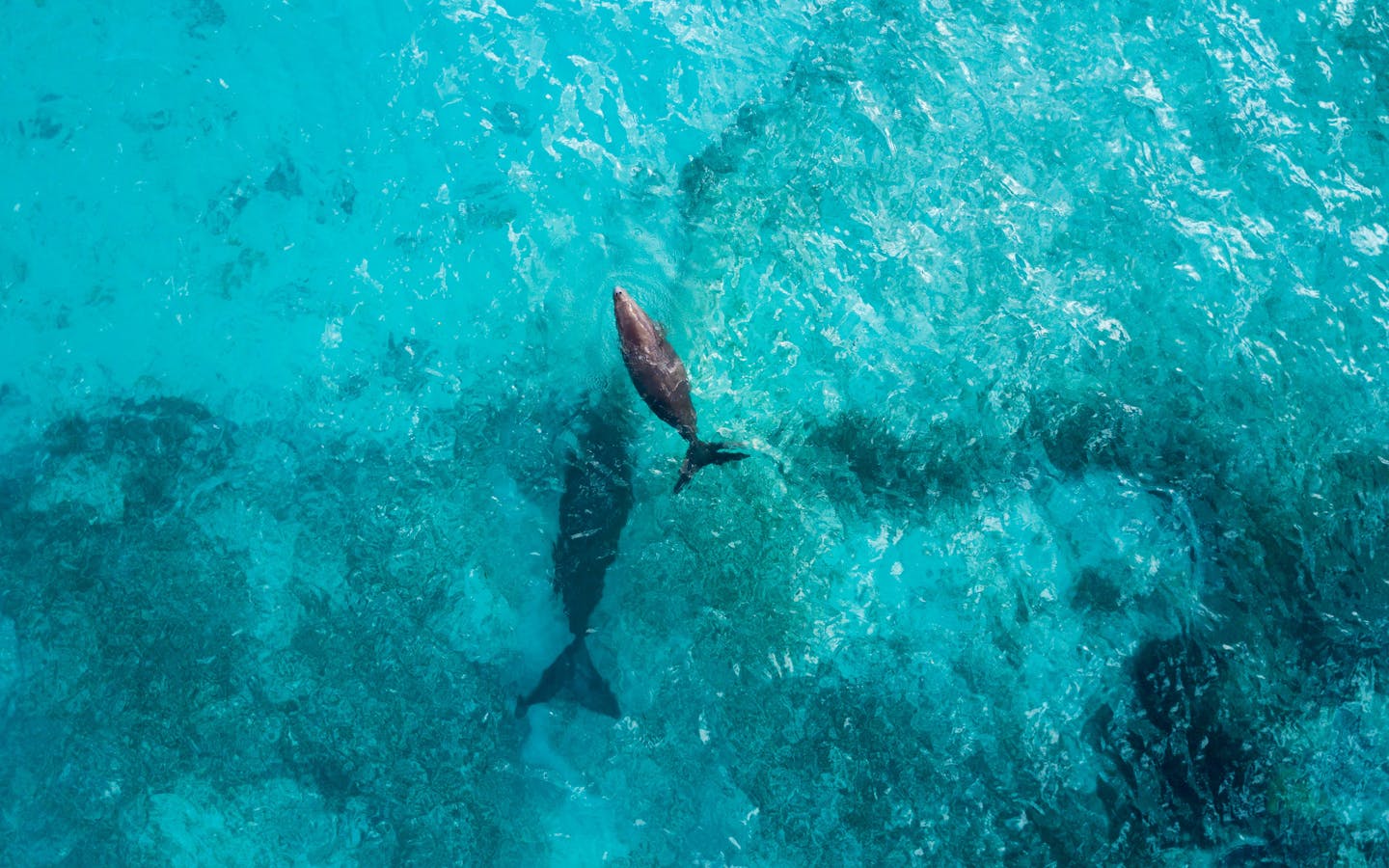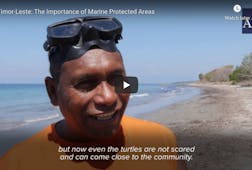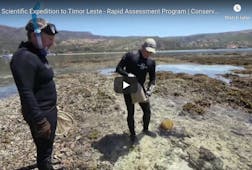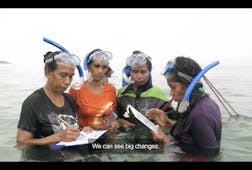Timor-Leste’s waters boast exceptional biodiversity, including extensive fisheries and healthy coral reefs. Twenty-five species of whales and dolphins frequent these waters — among the highest records of cetaceans in the world.
This rich stretch of ocean underpins the food security and well-being of more than 1.2 million people. Managed well, whale and dolphin tourism could also generate significant income for Timor-Leste.
The marine life here, however, still faces threats of illegal fishing and resource extraction projects. There is still much to be done to strengthen legislation to protect marine biodiversity.
Our role
By understanding what lies beneath, and its health, we can begin to value and conserve it. Conservation International's marine biodiversity assessments in Timor-Leste have led to the discovery of some of the most biodiverse and species-rich reefs
on Earth. One rapid cetacean survey sighted more than 2,280 whales and dolphins — including superpods of up to 600 individuals — from 11 different species in just five days.
Timor-Leste's marine life is key to the country’s budding eco-tourism sector. Our research, community engagement and work with local and national governments and other key partners is improving environmental management and helping define solutions to development challenges such as food security and employment.
Our plan

Expand scientific knowledge of marine life
There is currently little published information on the marine life in Timor-Leste, presenting difficulties for protecting these marine habitats.
Conservation International employs world-leading scientists to conduct Rapid Assessment Surveys. Cutting-edge technology such as drones and underwater microphones are used to gather footage for monitoring wildlife so that these marine ecosystems can be better understood and protected.

Strengthen government legislation
Creating a strong network of properly enforced Marine Protected Areas is crucial to maintaining the health of marine populations.
Together with the Timor-Leste Ministry of Agriculture and Fisheries (MAF) as well as our other partners, Conservation International is developing zoning areas that integrate conservation, livelihoods, food security, spiritual needs, and traditional considerations.

Incorporate community understanding
Communities are highly involved in zoning programs to protect culturally significant sites and local livelihoods. They are asked to identify areas where they would like to have tourism protection or development.
To reduce pressure on fragile reef systems, we have introduced the use of Fish Aggregating Devices to enable fishermen to fish in the open seas, as well as involve students in scientific surveys to allow them to witness the need for marine conservation firsthand.

Atauro Island
The neighbouring island of Timor-Leste’s mainland is occupied by 10,000 people, most of whom are artisanal fishers and subsistence farmers. Biodiversity surveys have documented the highest average number of reef fish, whales, dolphins, and fossilized corals, making it an ideal site for sustainable tourism.
Since 2015, Conservation International has worked with the communities in Atauro to implement traditional law and create a system of community-managed marine protected areas. Over the years, communities have witnessed the return of previously depleted fish species to a more plentiful catch. They have come to realise the role of natural wealth as a key part of a sustainable development and eco-tourism plan.
In 2019, the island's 12 protected areas were united through the creation of a marine protected area network, the nation's first. With the support of the community and the government, Conservation International is now making plans for Atauro Island and its waters to become a National Park.


Every Turtle Counts
Timor-Leste is home to three of the world’s seven marine turtles species. Every one of these three species is globally threatened. As in many other countries, turtles and their eggs are harvested in Timor-Leste for consumption and trade. Yet years of conflict meant there was very little data collected to inform practical approaches to conservation.
Conservation International’s ‘Every Turtle Counts’ project, began by improving our baseline understanding of the scale of the illegal turtle and turtle egg trade in Timor-Leste. Extensive interviews throughout the markets of Dili, the capital, revealed that turtles and their eggs are being harvested from multiple regions across the country. CI and our partners are now engaging coastal communities to raise awareness around the sustainable limit of egg consumption. Community-based data collection, led by women, will help us track improvements in turtle populations, and help bring other communities on-board to join the conservation effort.
We have also begun fitting nesting turtles with satellite tags. These track the movements of the various species and will help us identify the foraging, mating, and other sites of critical importance to the turtles, and push for their urgent protection.








